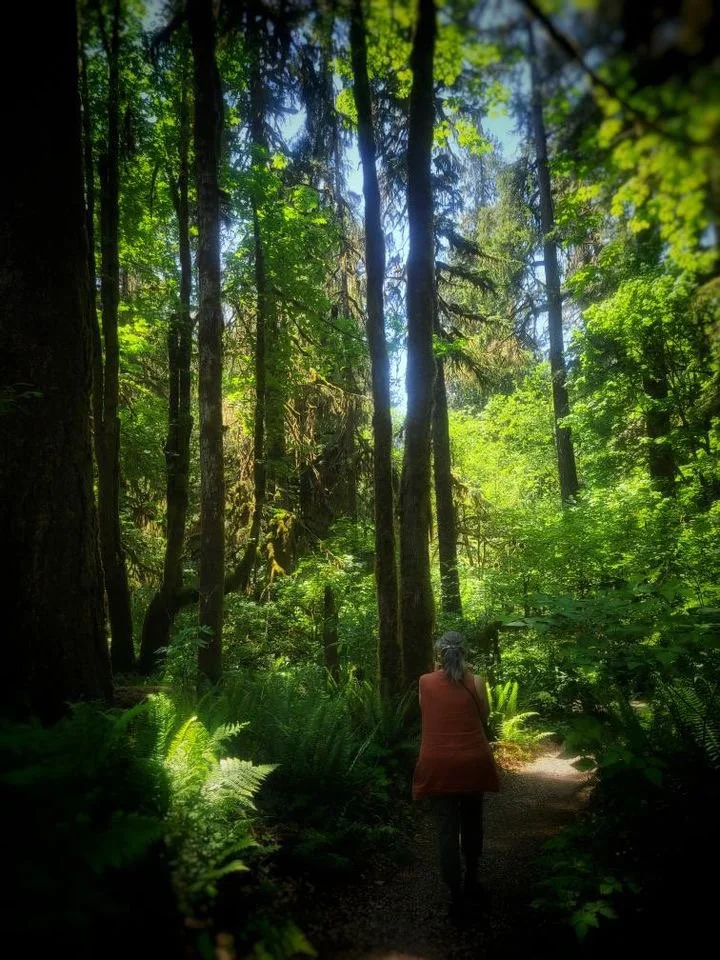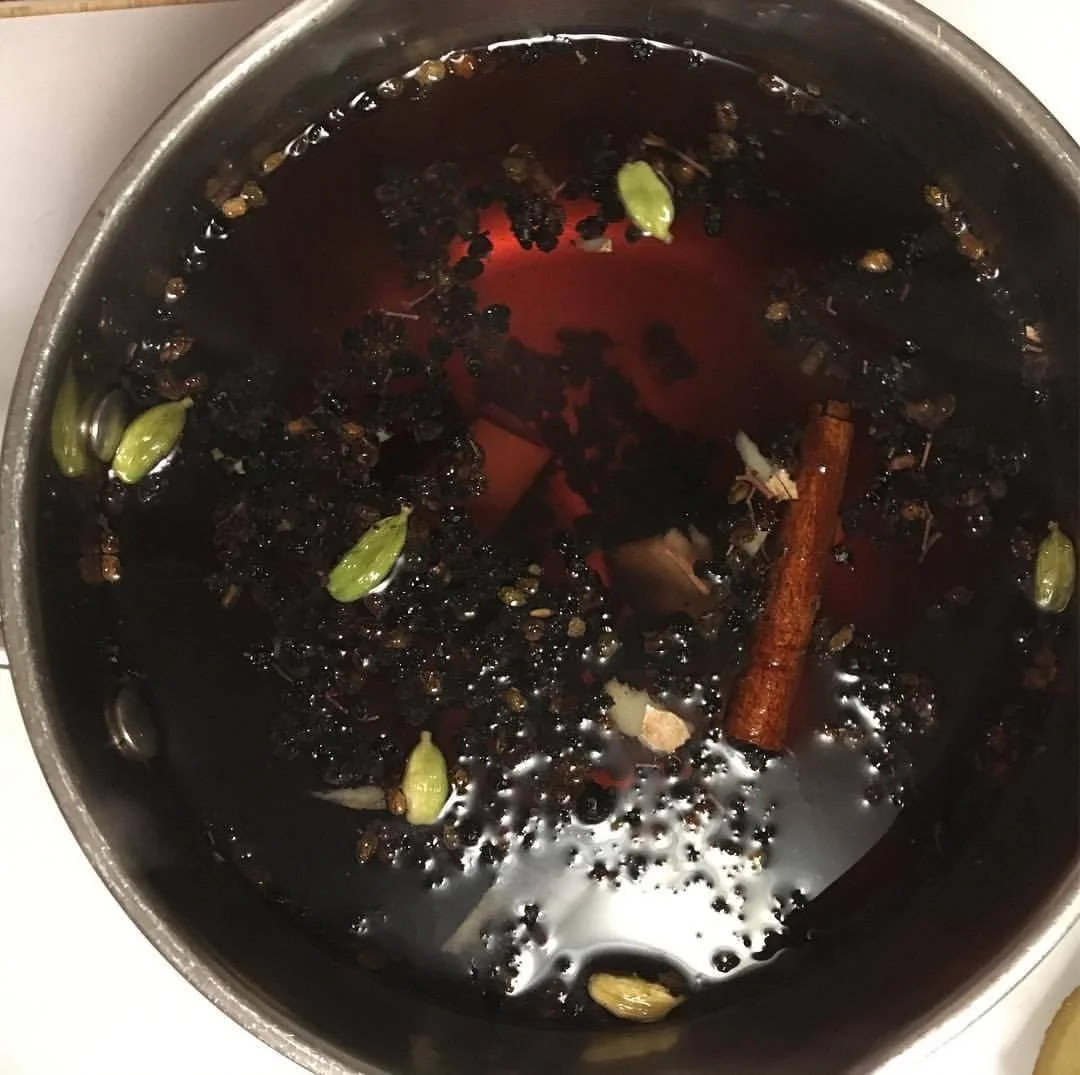Using Elderberry for Cold Season
/Blue Elderberry: A Winter Herbal Ally
Blue Elderberry has gained quite the reputation as an immune system stimulant and antiviral supplement. This blog gives two recipes to make your own Elder medicine at home.
Elderberry as an Antiviral
Elder sure is a plant to know this time of year, and its popularity as an antiviral is for good reason. It can reduce an inflammatory response in the sinuses and lungs and reduce the length of time you are ill by up to 50 percent. Reducing inflammation will relieve congestion which reduces symptoms, all good news!
Dosing with elderberry is best when you are just coming down with an illness. Small doses at 3-4 hour intervals is optimal in the first 3-5 days of a cold or flu. A tincture or elixir can be taken in 30-60 drop doses, while a tea can be taken in 1-2 cups every 4 hours.
Despite being a weedy plant in the Pacific Northwest, Elderberry’s rise in popularity has caused it to become scarce in the current marketplace. The popular elderberry syrups are less potent than a tincture or elixir and will commonly be labeled to take in one to three teaspoon doses. Commercial elderberry syrups can be made with excessive heat which reduces some of the effective properties. If possible, harvest fresh and make your own.
Herbal Background
Elderberry is a versatile plant. The flowers are an excellent remedy for acute ailments. Elder flowers are gentle and mild tasting and can be made into teas, syrups, and fritters, eaten raw in salads, and used as a garnish and in beverages. The flowers help promote sweating to reduce fevers and inflammation. They are anti-viral and anti-cancer. They also shorten the duration of viruses and reduce symptoms of the flu.
Blue Elderberry is found in some places on the West side of the Cascades but more prolifically in higher elevations or East of the Cascade regions of the PNW. It has a blue fruits and an umbel flower (small batches of flowers rising upward in the shape of an umbrella.)
The young bark of the elder is smooth, green and has warty bumps, called lenticels. The leaves are opposite, have sharply toothed margins and a pointy tip. All parts of the shrubby tree (leaf, stem, bark, and root) have a fragrance that once you smell it- you will remember the smell is Elder. It smells a bit like peanut butter!
The genus Sambucas has a few varieties, species nigra, ceraluea, and canadensis, that all share common traits. In the following paragraphs, I will be speaking of the Elderberry in general, meaning these species, Black Elderberry (Sambucas nigra,) Blue Elderberry (Sambucas ceraluea,) and Sambucas canadensis (Common Elderberry.) In contrast, Red Elderberry, Sambucas racemosa, has cone-shaped flowers and red fruits, and is not used in the same way as Blue, Black, and common Elderberry.
Harvesting the berries is a fun late summer adventure. In earlier months dried berries can be purchased from a health food store or your local apothecary.
The berries are mineral-flavored and not very sweet, certainly an acquired taste. Beware, they are irritating to the stomach when eaten raw. The fruits are high in iron and bioflavonoids, and are an immune tonic. When preparing the berries, discard stems and pull the fruit from the stem with the teeth of a fork for quicker processing. When harvesting more than you can process in one day, elderberries can be frozen and processed later.
Elderberry Tea Recipe
Here is a quick and easy way to start using Elderberry. This picture was taken just minutes after adding herbs to water. The Elderberry helps the tea become a beautiful, rich brew.
You will need:
Two tablespoons dried Elderberries
3-4 cardamom pods
A bit of a cinnamon stick
one inch ginger root, sliced.
Add all ingredients to a pot with about 3 cups of water. Bring brew to a boil. Lower heat to a simmer and decoct for about 20 minutes. Strain, add a bit of honey, and enjoy.
Elderberry Elixir Recipe
Here’s my own Elderberry Elixir. This one I forgot about it in my fridge after shaking it a couple of weeks. That’s probably why its crazy rich. Sometimes laziness pays off!
This recipe is a no-heat, syrupy thick elixir. It’s sweet and subtly spicy from the honey, ginger, cardamom and cinnamon. Tart rose hip and orange peel balance the flavors and the recipe is finished off with brandy and elderberry flowers. You can make it as a syrup, or like this one is a no heat syrupy thick elixir.
You will need:
1 1/2 Cups dried Elderberry
1/2 cup Dried Elder Flowers
1/4 cup dried Orange peel
1/4 cup dried Rosehips
1 heaping tablespoon fresh Ginger
1/2 Cinnamon stick
5-7 dried whole Cardamom seeds
Local honey, Brandy, & a quart sized canning jar
Break up cinnamon stick and cardamom pods by hand or with a mortar and pestle.
Place all ingredients in a quart sized canning jar.
Pour 50/50 local honey and Brandy over the contents until jar is full.
Label, shake and pray with it for a minimum of two weeks.



